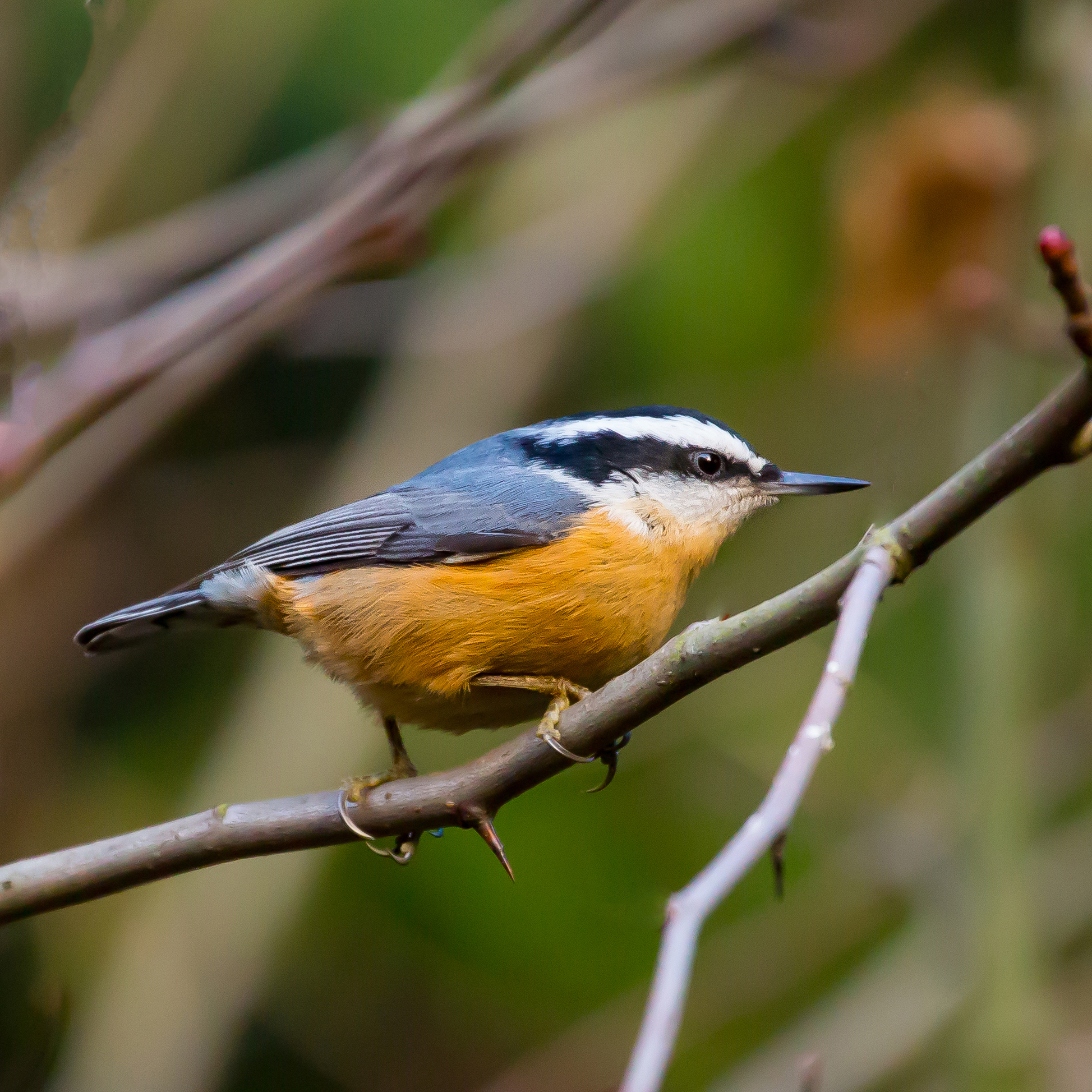Bird of the Month: Red-breasted Nuthatch
By Andy McCormick
PC: Mick Thompson (Red-breasted Nuthatch)
Scientific Name: Sitta canadensis
Length: 4.5”
Wingspan: 8.5”
Weight: 0.35 oz. (10 g)
AOU Alpha Code: RBNU
An acrobatic bird that is comfortable in both Pacific Northwest conifer forests and your backyard feeder.
The loud yank, yank, yank call of the Red-breasted Nuthatch is often heard long before the bird is seen. These nuthatches are common in PNW conifer forests especially where there are fir and spruce trees where these birds roam around the canopy in these trees. When seen, they will usually be patrolling limbs including the underside of branches and in a classic nuthatch pose, moving head-first down branches and the trunks of trees searching for insects.
The Red-breasted is one of four North American nuthatches in the genus Sitta, from the Greek sitte for nuthatch, a word first used by Aristotle for a bird that pecked on a tree (Holloway). The species epithet canadensis refers to Canada, the bird’s year-round range. The name nuthatch is thought to be a corruption of nuthack, which refers to the feeding behavior of pecking at a seed until it opens.
YEAR-ROUND RESIDENT
In Western Washington, the Cascade Range, and other higher elevation areas the Red-breasted Nuthatch is a resident species all year long. However, if cone production in its breeding area is poor, it will move to a more productive area. In some years, often in about two to four years, large numbers of Red-breasted Nuthatches will migrate southward. Nuthatches which breed in northern areas of Canada and Alaska will migrate the farthest and most often. Higher elevation breeders in Washington may move to lower elevation during some winters when cone production is poor (Ghalambor and Martin).
This nuthatch is a cavity nester and it usually excavates its own nest hole. Rarely will it use an old woodpecker cavity. The nest hole is lined with grass, moss, bark fibers, and feather. Usually 5-6 brown-spotted, white eggs are deposited. The female incubates the eggs for 12 days, while the male brings food to her. Both parents feed the nestlings and first flight occurs in about 2-3 weeks after hatching (Kaufman).
VOCAL VARIATION
Most descriptions of the Red-breasted Nuthatch vocalization focus on its nasal yank, yank, yank call. But this nuthatch has a variety of calls. The courtship call is a faster series of notes sung during the breeding season and this call can be extended into a longer whine. Similar in speed, but more aggressive sounding, the agonistic or defensive call is sung when the birds are alarmed. These nuthatches can also engage in counter singing with rivals in their territory (Ghalmbor and Martin).
Contact calls made up of muted twitterings will be used by Red-breasted Nuthatches in a variety of situations including when foraging together and when they join mixed flocks in winter. They will group with both Black-capped and Chestnut-backed Chickadees, Golden-crowned Kinglets, and Yellow-rumped Warblers in feeding flocks (Dunne).
The variety of calls of the Red-breasted Nuthatch can be heard at the Macaulay Library
CONSERVATION AND MANAGEMENT
The Red-breasted Nuthatch is considered a “weak” excavator, because it prefers the softer wood of diseased or dead snags. It is not able to excavate hard wood as a woodpecker is. Forest management practices which leave dying and dead trees behind are beneficial for providing more breeding habitat for these nuthatches. Overall, the Red-breasted Nuthatch is abundant within its range and its population is growing.
References available upon request from amccormick@eastsideaudubon.org.


